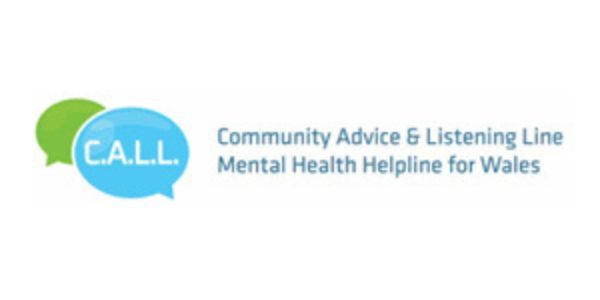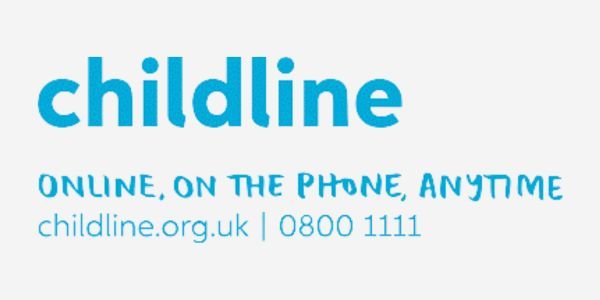Jaundice in babies
Advice for parents and carers of children
If your baby has any of the following:
- Unable to wake (unarousable)
- Rhythmic jerky movements of arms or legs (a seizure
- Pauses in breathing or irregular breathing pattern
- Pale, mottled and feels abnormally cold to touch
You need urgent help.
Go to the nearest Hospital Emergency (A&E) Department or phone 999
If your baby has any of the following:
- Jaundice appears in the first 24 hours of life
- Rapid progression in the intensity of ‘yellowness’
- Looks very pale and yellow
- Becoming increasingly sleepy and less interested in feeding
- Unable to settle (inconsolable)
- No wet nappies in the last 8 hours
- Extremely pale (chalk coloured) stool- keep a sample to show the doctor
- Jaundice remaining beyond 2 weeks of life (after 3 weeks of life in a premature baby)
You need to contact a doctor or nurse today.
Please ring your GP surgery or contact NHS Wales 111
If none of the above features are present:
- Baby looks lightly yellow, mainly on face, which can progress to a mild to moderate intensity in the next day or two, before fading away completely over the next two weeks Continues to feed well, breast or formula.
- Has plenty of wet nappies and continues to pass dark green poo changing to yellow "seedy" by day 5
- Baby wakes up/cries appropriately for feeds
Self care
Continue providing your child’s care at home. If you are still concerned about your child, ring your GP surgery or contact NHS Wales 111
It is completely normal for babies to get mildly jaundiced. That’s because babies are born with high levels of red cells in their blood. After birth, as these red cells break down, they produce a yellow pigment called bilirubin. Bilirubin is normally removed by the liver, but as babies have an immature liver at birth, it can take up to 2 weeks for the bilirubin to clear. Breast feeding can cause mild jaundice as well – however the benefits of breastfeeding far outweigh the mild jaundice that may result.
In a small number of cases, there may be an underlying reason for a baby becoming severely jaundiced. This includes blood group incompatibility between the mother and baby, higher than normal level of red cells in the baby (polycythaemia) or genetic problems with the red cells. If there is a family history of red cell problems, please let your midwife know during pregnancy- your baby may need special tests after birth.
Jaundice occasionally persists beyond two weeks of age (beyond three weeks for babies born preterm- less than 37 completed weeks). If this happens, your baby is likely to be called into the hospital for further blood tests to find out reasons for this prolongation. In most instances, the cause for this is just your baby’s liver taking a little longer to adapt (physiological jaundice) or breast milk jaundice. Neither of these are a problem for your baby. We also check the baby for much rarer causes of prolonged jaundice including urine infections, congenital viral infections (CMV), metabolic conditions (G6PD) and biliary atresia. Fortunately, these conditions are very rare and in most instances, the jaundice settles without any treatment.
All newborn babies get a full head to toe examination within 72 hours of being born. In some instances, jaundice is picked up during this examination. If your baby develops jaundice at home, in most situations, they will not need to see a healthcare professional unless they have any red or amber features (see above). If your baby falls within ‘Amber’, see a GP or Community Midwife urgently as a blood test may be needed to check their jaundice ‘level’. If your baby has any ‘Red’ features, they will need to be immediately assessed in hospital - dial 999 and ask for assistance from the emergency services.
Continue to feed your baby as planned. If you are breast feeding your baby, continue to breast feed regularly and wake up your baby for feeds, if necessary. Formula supplementation, if not by choice, should only be considered if recommended by medical professionals.
In a vast majority of babies, jaundice does not need treatment and should resolve completely by two weeks of age. Treatment is needed only if the baby’s jaundice ‘level’ is high and is likely to rise further without treatment. This decision will be made by a healthcare professional after they have checked the baby’s jaundice ‘level’ either with a blood test or by using a hand-held device (which, if high, needs to be confirmed by a blood test).
The most common form of treatment is phototherapy. This is where a baby is kept exposed under special light in the hospital. This light alters the pigment bilirubin and makes it easier to be processed by the liver. Phototherapy can be administered on the postnatal ward or children’s ward. If the jaundice level does not come down as expected, then this treatment may need to be ‘intensified’. Click here for a video on phototherapy.
In the vast majority of babies, jaundice does not lead to any long-term complications.
This guidance is written by healthcare professionals from across Hampshire, Dorset and the Isle of Wight.
NHS 111 Wales
Website: NHS 111 Wales
NHS 111 Wales (Option 2) telephone service is available 24/7 and can be used for urgent mental health advice and support.
Meic
Website: www.meiccymru.org
Meic is the helpline service for children and young people up to the age of 25 in Wales. Chat online, freephone 080880 23456, or text 84001.
C.A.L.L. Community Advice Listening Line
Website: www.callhelpline.org.uk
Provides a confidential mental health listening and emotional support line which is open 24/7. Call 0800 132 737 or text ‘help’ to 81066.
Shout
Website: www.giveusashout.org
Text ‘shout’ to 85258 anytime, day or night.
Childline
Website: www.childline.org.uk
If you’re under 19 you can confidentially call, chat online or email about any problem big or small.
Samaritans
Website: www.samaritans.org/wales/samaritans-cymru/
Call 116 123 free, anytime, day or night.
Papyrus
Website: www.papyrus-uk.org
Are you, or is a young person you know, not coping with life? For confidential suicide prevention advice contact HOPELINEUK. We are open 9am–midnight every day.
Campaign Against Living Miserably (CALM) for men
Website: www.thecalmzone.net
Need help? Call our helpline 5pm-midnight, 365 days a year on 0800 58 58 58.
DAN 24/7 - Wales Drug and Alcohol Helpline
Website: www.dan247.org.uk/
Freephone 0808 808 2234, or text DAN to 81066.
NHS 111 Wales
Website: NHS 111 Wales
NHS 111 Wales (Option 2) telephone service is available 24/7 and can be used for urgent mental health advice and support.
Meic
Website: www.meiccymru.org
Meic is the helpline service for children and young people up to the age of 25 in Wales. Chat online, freephone 080880 23456, or text 84001.
C.A.L.L. Community Advice Listening Line
Website: www.callhelpline.org.uk
Provides a confidential mental health listening and emotional support line which is open 24/7. Call 0800 132 737 or text ‘help’ to 81066.
Shout
Website: www.giveusashout.org
Text ‘shout’ to 85258 anytime, day or night.
Childline
Website: www.childline.org.uk
If you’re under 19 you can confidentially call, chat online or email about any problem big or small.
Samaritans
Website: www.samaritans.org/wales/samaritans-cymru/
Call 116 123 free, anytime, day or night.
Papyrus
Website: www.papyrus-uk.org
Are you, or is a young person you know, not coping with life? For confidential suicide prevention advice contact HOPELINEUK. We are open 9am–midnight every day.
Campaign Against Living Miserably (CALM) for men
Website: www.thecalmzone.net
Need help? Call our helpline 5pm-midnight, 365 days a year on 0800 58 58 58.
DAN 24/7 - Wales Drug and Alcohol Helpline
Website: www.dan247.org.uk/
Freephone 0808 808 2234, or text DAN to 81066.
- Try to stay calm.
- Tell them you are there for them and that you are not upset or angry.
- Tell them you are pleased they have told you they are having thoughts of harming themselves and that you are able to help them through this time.
- Listen to what they are saying even if they are venting anger or other negative emotions at you.
- Listen without interrupting.
- Validate their thoughts and feelings – they are real and important.
- Try to be emotionally available and present for your child.
- Once things appear to be settling please encourage your child to relax as the day/ evening progresses and make some suggestions for things you can do together to distract them from their thoughts (see below for some ideas).
- Try to proactively manage any potential conflicts or arguments within your immediate environment.
- Be mindful of excessive use of mobile devices but that young people really need to feel connected to others at times of distress.
If you are concerned that your child/ young person is at risk of harming themselves, please ensure the following:
- All medications (prescribed/ over the counter/ vitamins) are removed and/ or locked in a strong lockable medical box or locked cupboard. Medication needs to be stored in this way in all houses where the young person stays, including grandparents, foster carers, step parents and residential homes.
- All sharp objects, such as knives and razor blades, to be removed and/ or stored securely.
- Ensure the young person has not got a stock of medication or sharp objects in their room or amongst their property.
- Other environmental risks in your home should be considered, e.g. removing ropes, ties, dressing gown ties.
- Do not allow your child/ young person to go out alone or with friends during times of distress and when they are voicing thoughts of self-harm or suicide.
- Monitor your child/ young person’s mood and behaviour closely.
- Increase your presence and supervision of your child at home, if needed remaining awake or checking on them during the night.
- Ask them about thoughts of self-harm and suicide.
- Look out for any warning signs in your child/ young person that they might be struggling.
- Distract yourself - watch a film or TV programme, play a computer game that absorbs your mind, or read a book you’re really interested in
- Get creative – drawing, mindful colouring, taking photos, listening to music, singing
- Get moving – walk, run, dance, do an exercise or yoga video
- Comfort yourself – have bubble bath or shower, eat something you like, stroke a pet, cuddle up tightly in a blanket, rock/ hug yourself, spray a favourite perfume
Alternatives to self-harm when the urge to harm is very strong:
- Hold ice in your hand for as long as you can
- Step under a cold shower briefly
- Run your hands under cold water
- Snap an elastic band against your wrist
- Hit a cushion against the wall or bed
- Punch a punch bag or pillow
- Go for a fast paced walk or run up and down the stairs several times
- Tear or scrunch up paper













